On Saturday 29 May, up to a million people from all over the UK (the march took 2 hours to pass a given point) marched from Parliament Square, up Whitehall, through Trafalgar Square, up the Charing Cross Road, along Oxford Street and out through West London to Shepherd’s Bush, where (after a few wrong turns in Acton) we peacefully occupied the Westfield Shopping Centre. Some of the more foolhardy (and footsore) of us made it back to Speaker’s Corner in Hyde Park around 8pm. This is my photographic record of the day.
The policing of protests in the UK has two purposes: to intimidate and discredit protesters, and in doing so dissuade other would-be protesters from joining them. Not wishing to contribute to either, I will not report on the typically disgraceful behaviour of the Metropolitan Police Force; except to say that, in the face of their customary provocation and violence, which included the use of dog units, mounted units and riot units, the protesters remained peaceful.
As for the media, the degree of censorship in the UK biosecurity state is now so complete that the largest demonstrations in British history have either been completely ignored or reported as a few hundred ‘right-wing conspiracy theorists’. But as these photographs show, the millions of people on these marches are neither. On the contrary, they are, in a way I’ve never seen on any demonstration before in this country, a cross-section of the British People outside the bubble of Inner London. We may still be a minority in the UK, but we’re a growing minority, and we will not be silenced (or appeased by opening the pubs to the masked, tracked, tested and vaccinated).
The best protests — and these are the best I’ve ever been on — have a carnival-like atmosphere, in which the usual order of values is inverted: humans take precedence over cars on our city streets; our collective rights of way are asserted over individual rights of ownership; the police are cowered by the citizens they are sent to intimidate; and the voices of the people are raised above the threats of the government and the lies of the media. In this respect, one of my favourite aspects of these marches has been the stickers. As these photos show, these draw attention to, de-normalise and counter the unprecedented level of propaganda to which we are subjected on every screen and surface, from buses, bus stops, billboards and shop windows to the boards especially erected on our streets. To these government-sponsored campaigns of fear and division, these stickers, like the thousands of home-made banners of the marchers, oppose courage and community.
Those whose protests are confined to posts on social media always ask the same question, in the hope it will excuse their apathy: what does protest change? As these photographs also show, it changes those protesting. It shows those who have been isolated that they are not alone. It allows the silenced to exchange views and information. It organises individual dissent into collective opposition. And without it, the rights and freedoms we’ve allowed to be stolen from us would never have been won.
Personally, I’m not concerned that our protests are not being reported by the BBC and corporate-owned media, as their blanket censorship of the British public is the clearest demonstration yet of the lies and manipulation of public opinion on which the UK biosecurity state is being built. But the purpose of demonstrating is not to get on the 9 o’clock News or in the Sunday Papers, which always lie about demonstrators and misrepresent what they’re saying. The purpose of demonstrating is to attract more people to join in, till there’s more of us marching on the street than are complaining about us on social media. When that happens — as it will if we make it — a period of political change begins. Please join us.
Simon Elmer
Architects for Social Housing
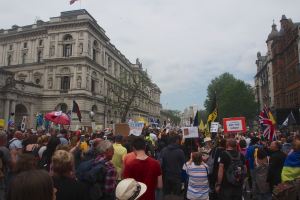
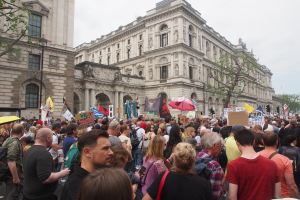




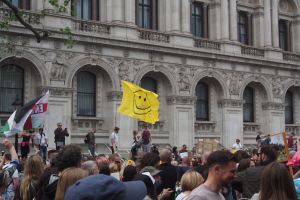
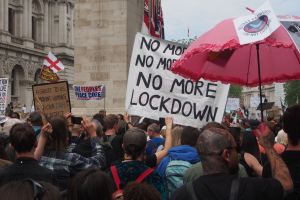
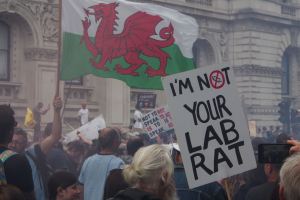
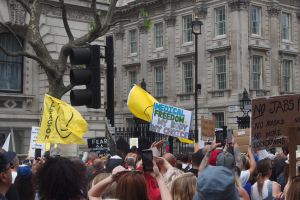


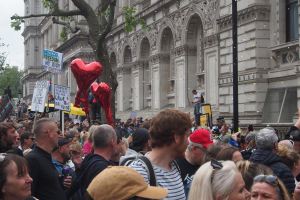








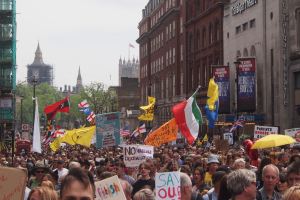
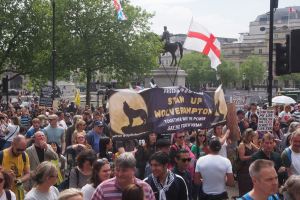





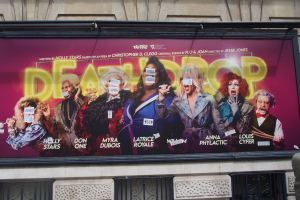





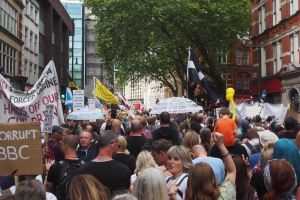





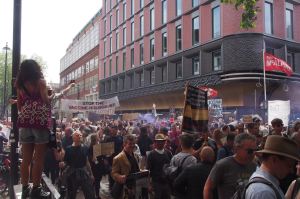
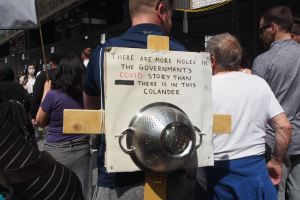
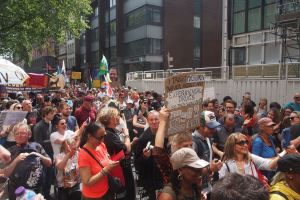


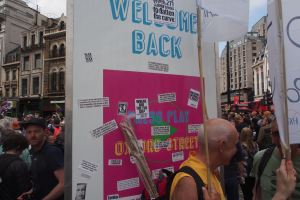


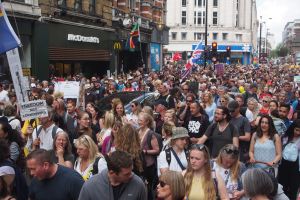



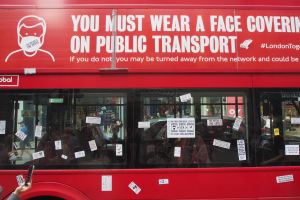
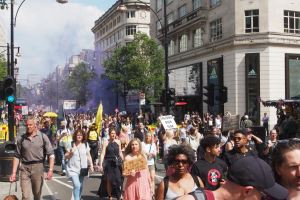


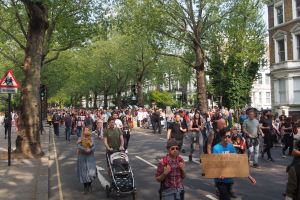







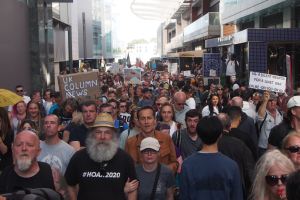
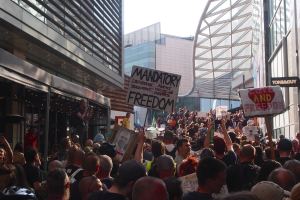
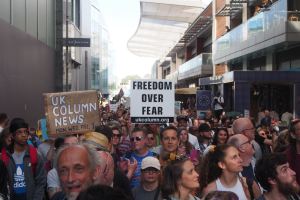

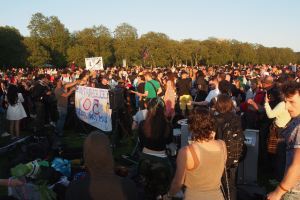

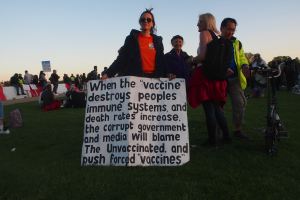
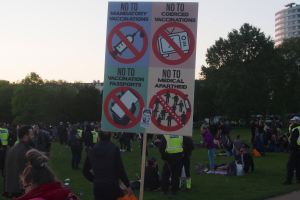
Roll on Nuremberg II. Even the BBC will have to report on former cabinet ministers being banged away for 20 years.
LikeLike
Hello Wirral, you might be interested in my new book, The Road to Fascism: For a Critique of the Global Biosecurity State, which I’ve been working on since February this year and published today. It’s available as a print-on-demand book in hardback and paperback editions (with an e-book forthcoming). Please click on this link for the contents page, my preface and purchase options. Best wishes and thanks for the support. https://architectsforsocialhousing.co.uk/2022/09/28/the-road-to-fascism-for-a-critique-of-the-global-biosecurity-state/
LikeLike
Thanks for reporting. Question: where would I be notified in advance of such events?
LikeLike
Telegram, various groups on there eg ‘official voice’ Also apparently Gab, Facebook, Instagram, however the latter 2 are censored to hell so unlikely to be reliable
LikeLike
May I ask which groups? (you can reply by email if necessary). Thanks a lot
LikeLike
“On the contrary, they are, in a way I’ve never seen on any demonstration before in this country, a cross-section of the British People outside the bubble of Inner London.”
I presume you were ill in bed on 15 Feb 2003. (And, sure enough, that made no difference….maybe if we’d all sat down and stayed put…)
What the hell, it looks to have been a brilliant gathering. The morale-boost of this kind of thing is terrific and I really appreciate your report!
LikeLike
Although it put similar numbers on the street, the demonstration against the War on Iraq in 2003 was a very different kind of event. It was organised by the Stop the War Coalition, the Campaign for Nuclear Disarmament and the Muslim Association of Britain. It’s organisers asked permission in advance for its route – and was denied permission to rally in Hyde Park. The Daily Mail reported the demonstration leading up to the event, and supplied thousands of pre-made placards for the marchers. The demonstration was sponsored by Greenpeace and Mecca-Cola. Appointed parliamentary politicians and celebrities, including Harold Pinter, George Galloway, Tony Benn, Charles Kennedy, Tariq Ali and Bianca Jagger, were selected to address the crowd in advance. The demonstration was covered favourably in the media. The riot squad of the Metropolitan Police Force didn’t attack demonstrators at the end under cover of night when all the journalists had gone home. And the demonstrators weren’t denounced as ‘conspiracy theorists’ on mainstream and social media afterwards.
In other words, the 2003 demonstration set the template for the appropriation of protest by parliamentary parties and their financial backers to further their political aspirations that defined ‘activism’ in the UK in the 2010s, from the protests against the housing crisis organised by the Labour Party whose councils were (and are) selling off and demolishing tens of thousands of council homes, to the anti-Brexit marches of the middle-classes in defence of the EU’s neoliberal project, to the radical conservatism of Black Lives Matter’s identity politics, to the corporate-sponsored and city-hall-sanctioned performance art of Extinction Rebellion promoting a ‘green’ new deal for capitalism.
The anti-lockdown marches this spring, across the UK on 20 March and 15 May, and in London on 24 April and 29 May, are different in every respect to those spectacles of democracy. As the huge numbers and intimidating behaviour of the TSG riot police at the 20 March demonstration showed, no permission has been requested or granted to assemble under the coronavirus-justified removal of our right of assembly. If there is a pre-planned route, no-one seems to know it, and several of the marches have had at least two arms, which has caused the police huge problems in trying to control the march, which they have now largely abandoned. The only recognised speaker has been Piers Corbyn, but he has no platform, and merely grabs a moment when it presents itself. The placards, as these photos show, are all made by those carrying them, and there is no branding of the demonstration by parliamentary parties, unions or other affiliates of the Labour Party. And the police, the press and the parliamentary parties are all uniformly hostile and dismissive.
Perhaps the biggest difference is the spirit on these marches, which is hugely positive and peaceful. In four marches participated in by well over a million people without any security of any kind, there hasn’t, from what I’ve seen or heard about, been a single incident of violence. That must be almost unique. The only aggression and violence has come from the police, and largely at the end of the march, when the tired protesters have gathered in Hyde Park and the Home Secretary wants footage of a scrap for the 9 o’clock News. In other words, these demonstrations are properly people-driven, and not the media-managed spectacles that have domesticated and drained protest of meaning in the UK for the past two decades.
The only similarity between them is that, just as in 2003, the UK Government, supported by the UK media, has sold a lie to the UK public that the people not demonstrating on the streets have swallowed hook, line and sinker. If you’re interested, I’ve compared the two lies, the Iraq War and the COVID-19 crisis, in my article Cui Bono? The COVID-19 ‘Conspiracy’.
LikeLike
Very interesting, thank you for writing about this.
LikeLike
Absolutely, thank you for sharing this.
LikeLike
Dear diarist, you might be interested in my new book, The Road to Fascism: For a Critique of the Global Biosecurity State, which I’ve been working on since February this year and published today. It’s available as a print-on-demand book in hardback and paperback editions (with an e-book forthcoming). Please click on this link for the contents page, my preface and purchase options. Best wishes. https://architectsforsocialhousing.co.uk/2022/09/28/the-road-to-fascism-for-a-critique-of-the-global-biosecurity-state/
LikeLike
I participated in that march, but didn’t go as far as Shepherd’s Bush, as the further west I walked the further I’d have to double back to return to Marylebone for my train home. So I peeled off as we went past Kensington Gardens. At that stage the march stretched forward into the distance as far as could be seen. What surprised me walking back towards Marble Arch on the opposite side of the road was how far back it went. There were far more people in the march than were originally at Parliament Square, where I had met up with some fellow activists from Coventry.
I also participated in the march five weeks beforehand where we started and finished in Hyde Park. The atmosphere on that march was brilliant and uplifting. Since those two marches I’ve concentrated on going to the freedom rallies and protest marches in Birmingham, except for attending one small rally and protest march in Oxford. Whilst going on protests in London is important, to me it is equally important that we keep this as a national movement. What I’ve noticed with all these protests is the genuine diversity in backgrounds.
LikeLike